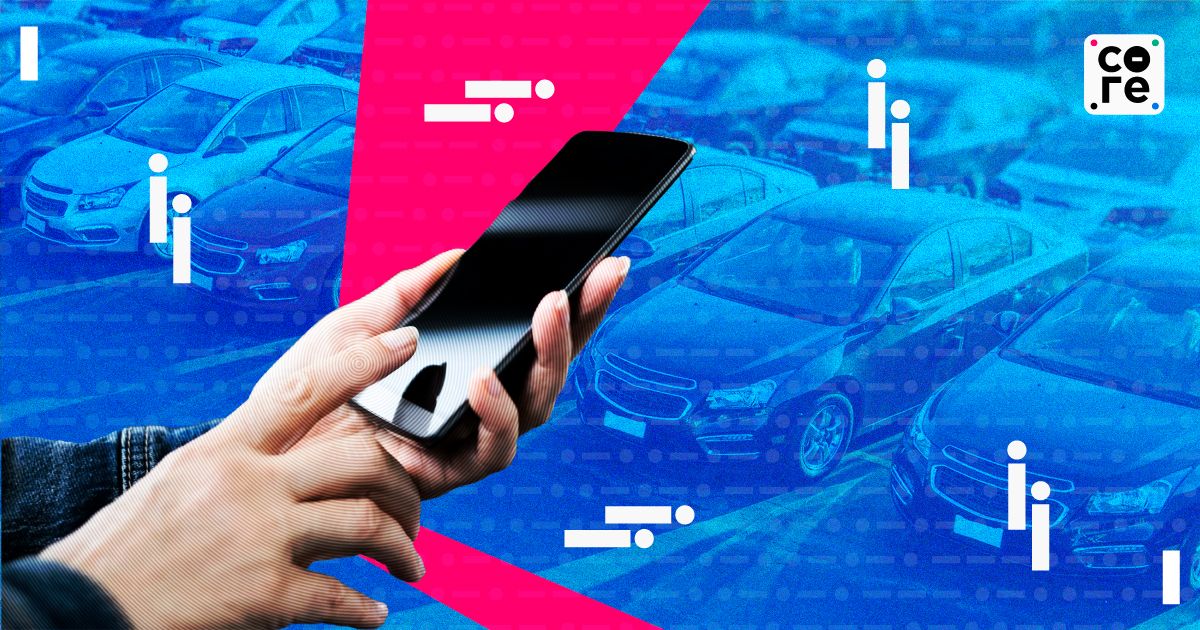When Mumbai-based Raphae Halim bought a Mahindra e2o electric car in 2013, he joined a niche of India’s earliest EV adopters. Nine years later his battery degraded to a point where he couldn’t drive it more than 10 km after a single charge. It was time to replace the battery pack.
While Halim was prepared to replace the battery pack, with or without a warranty, he realised that he didn’t need to. “By that time, the battery ecosystem in India had picked up,” he told The Core. It could be repaired at a cheaper cost, by replacing individual cells within the pack which had degraded. He also got the Mahindra and Mahindra workshop to run a diagnostic check on the car to ensure it was running well. Currently, a new battery pack costs anywhere between Rs 3.5 to Rs 8 lakhs for cars, as per estimates. Halim paid a total of Rs 75,000 to switch out three faulty cells from his pack.
Halim, who was part of PluginIndia – India’s first community of EV users – is very clued in on developments in the EV space and experiments by other EV users. He also installed an active cell balancer, which reduces the chance of one individual cell degrading quicker than others, in the car.
It has been around two years since Halim got his battery pack repaired. His car has had a range of about 90 km per charge. While this is not a permanent solution, it has significantly increased the life of his battery.
Like Halim, several early adopters of electric two-wheelers, whose vehicles were past the warranty period, preferred to have their battery packs repaired rather than replaced. Alan, who runs an electric scooter service centre in Ernakulam, Kerala told The Core that his centre gets five to ten vehicles a month for battery repairs. Most of these, he said, come from scooters that have been in the market for longer than five years, like Okinawa, Benling, Kinetic Green and more.
While users of vehicles aged five to ten years have the option of repairing their batteries, this may not be the case for those buying EVs today. Newer EV batteries are increasingly difficult to repair, with some being completely sealed. Third-party mechanics also don’t have access to design or diagnostic data from manufacturers. This will not only increase costs for users but also contradict the fundamental purpose of EVs being sustainable.
Battery Replacement Anxiety
An electric vehicle, unlike an internal combustion engine vehicle, runs on a battery that doesn’t last forever. With each charge and discharge cycle, the battery degrades a little. On average, the EV battery degrades about 1-2% each year, depending on usage patterns and charging habits. As the battery degrades, the vehicle’s range drops, eventually leading to the need for repair or replacement. Apart from general degradation and range issues, EV users sometimes need to fix faulty parts, like the battery management system (BMS).
Currently, a battery pack makes up about half (or more) of the cost of an EV, making the prospect of replacing it a major anxiety for users. To alleviate this anxiety, several manufacturers in India offer extended warranties specifically for batteries.
While Ather Energy offers an extended battery warranty of five years, Ola Electric announced an eight-year extended warranty in February. Tata Motors offers an eight-year or 1,60,000km (whichever is earlier) warranty on the battery and motor of its vehicles. At the moment, if a battery under warranty malfunctions, the company replaces the battery.
Because of the extended warranty, and cost-free replacement, newer EV users are often opting to get their batteries replaced instead of repaired.
Lithium-ion battery prices have been dropping faster than expected. According to Goldman Sachs, battery prices might fall by 40% by 2025, thanks to dropping prices of raw materials.
It is still early days, and the technology is rapidly evolving. New vehicles have more sophisticated, better-quality battery packs, designed to last longer. So while there isn’t a definitive answer to how long your battery will last, various studies peg it anywhere between 8-20 years.
Little Knowledge About Developing Tech
Early adopters were also luckier with repairs. Batteries of a Mahindra e2o, for instance, are simple enough to be opened and repaired. Technicians who work for the company service centres are equipped with the knowledge, and as more cars hit the second-hand market, spare parts became more readily available.
For vehicles bought in the last four years, things are a little different. For one, they are still under the warranty period, and users prefer to take them to the authorised service centres. Alan, who runs his garage in Ernakulam, said that he had only worked on one Ola Electric battery, which had been damaged by rat bites and wasn’t covered under warranty. “The battery cost [to replace] was so expensive, the customer said I would rather purchase an ICE scooter for that much,” he said.
In many cases, a complete replacement of the pack may not be warranted, and replacing individual cells that have degraded, could increase the life and range of the battery. The question is, will this still be possible in the next ten years?
The repair space currently is dominated by third-party workshops and centres. However, they do not have access to developing technology and R&D by OEMs.
Getting their hands on spare parts of cells used by market leaders like Tata Motors in their battery packs is also very difficult since they aren’t made available in the open market, Anurag Sharma, CEO of EV service company India EV Garage explained.
What is available is either cheaper Chinese cells or second-hand discards that garages might get their hands on.
They also don’t have access to diagnostic vehicle data, which could explain exactly what the issue is. Globally, repair shops have been fighting automakers for access to this data. In India too, this is a key drawback for independent service centres.
Sharma and his team have worked on repairing batteries of various two-wheelers and Mahindra e20s, Mahindra Reva, and the older version of the Tata Tigor EV since 2021. They source cells either via Chinese imports or through second-hand or discarded batteries of older EVs.
Unrepairable Batteries
Globally, there is also a growing concern about batteries being made nearly impossible to repair. Tesla’s structural battery packs are made in a way that they are a part of the car, making it very hard to remove or repair them.
Alan said that batteries by two-wheeler maker Pure EV are made with a silicon coating and are not repairable. While the company made headlines in 2021 for coming up with an AI-driven solution to automatically repair batteries, Alan said he has 25 unrepairable, unusable battery packs lying in his garage.
“People have just left them here,” he said.
For cars from companies like Tata Motors, battery packs are more complicated than earlier models used by Mahindra & Mahindra cars, Sharma said. They are made with updated safety measures — with coolants and temperature sensors and are sealed. “We can’t confirm the structure of these battery packs because they aren’t open source…if someone doesn’t have warranty and wants us to replace a module, it is possible but we need the cells from the company as well,” he said.
The Core reached out to Ather Energy, Tata Motors and Pure EV for comment but did not get a response.
Many manufacturers across the world also actively discourage repairing batteries citing safety concerns.
“It is like repairing a bomb,” Alan joked. Special insulated tools and equipment, plus expertise is needed to avoid injuries.
Repairing Is More Sustainable
A lithium-ion battery pack is essentially made up of several individual cells, connected and arranged in modules, put together along with a BMS. We’ve earlier written in detail how a battery pack is assembled.
When a battery pack is charged and discharged, all the cells don’t degrade equally. Some might degrade way more quickly than others. Replacing these cells, with cells that better match the age and degradation of the rest of the pack, increases the life of the pack. Adding an active cell balancer, as Halim did, ensures that there isn’t too much disparity in cell degradation.
It is way cheaper to repair a battery than to replace it. Not only that, but it is also more sustainable.
While a replaced battery pack lands up in a recycling facility, repairing a pack extends the process and also saves energy and resources that would go into making a new pack, and recycling the old one before its time.
But with more batteries being replaced than repaired, the world will likely end up with more EV battery scrap, something it has already struggled to successfully dispose of.
While a replaced battery pack lands up in a recycling facility, repairing a pack extends the process and also saves energy and resources that would go into making a new pack, and recycling the old one before its time.
There are strict rules around lithium-ion battery waste disposal. According to India’s Battery Waste Management Rules from 2022, 90% of discarded materials must be recycled and recovered by 2026, with 20% going into new batteries by 2030. Battery recycling is a capital-intensive process, and recyclers currently struggle with logistical hurdles.
“One of the primary challenges we currently face… is the collection of battery scrap. The unorganised nature of the market complicates the efficient retrieval of these valuable resources,” Vikrant Singh, Co-Founder & CTO OF battery recycling company BatX Energies told The Core in an email response.
Recyclers like BatX are currently focused on electronics scrap. “From 2026 onwards, we anticipate a significant shift towards EV batteries,” Singh said, adding that they also expect the industry to formalise soon.





